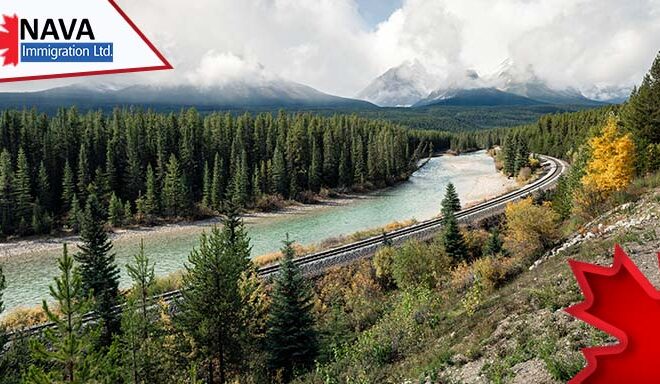How To Immigrate To Canada As An Engineer
As Canada’s immigration system becomes more targeted toward the nation’s economic needs, targeted professions have gained prominence among new permanent residents via both PNP & Express Entry. Here’s how one can immigrate to Canada as an engineer.
Engineers are one of the most sought-after professionals in Canada. Both federal & provincial immigration departments have declared their need for numerous kinds of engineers across Canada. Well, that’s because they have abundant opportunities to immigrate to the nation.
Well, the pathways to immigrate to Canada as an engineer can be categorized in two ways:
- Direct permanent residence paths
- Paths that build eligibility for PR
Direct Permanent Residence Paths
Professional engineers seeking to immigrate to Canada & gain PR directly can make use of two paths that target their professions, i.e., Express Entry & PNP.
- Express Entry
Express Entry is one of Canada’s leading systems for economic immigration. It is an electronic system encompassing three immigration programs, i.e., FSWP, FSTP, & CEC.
This year, Express Entry has incorporated category-based draws to better address Canada’s labor shortages. These categories are made up of targeted professions that applicants with experience in those professions can be chosen under & invited to apply for PR.
Engineers are included within the STEM category. The engineering professions targeted include:
- Civil engineers
- Computer engineers
- Electrical & electronics engineers
- Engineering managers
- Industrial & manufacturing engineering
- Metallurgical & materials engineers
- Software engineers & designers
Note that while targeted professions can help those with experience acquire PR, basic eligibility criteria for Express Entry should be met in order to be considered in category-based draws.
- Provincial Nominee Programs
PNPs are Canada’s number one way for economic immigration. These are immigration programs that each province, except for Quebec & Nunavut, administers.
In addition, PNPs help spread the benefits of immigration across Canada & help provinces address their local labor, economic, & demographic needs. As such, PNPs have been targeting certain professions for much longer than Express Entry.
Each PNP has its own list of in-demand professions, wherein engineers often feature prominently. For example, British Columbia targets over seven engineering professions with its PNP.
Like Express Entry, basic eligibility criteria for the PNP should be met to be eligible for these targeted measures. Note that these can vary significantly between PNPs & their individual immigration streams.
Paths To Building Eligibility For PR
In case you lack work experience eligibility for one of the direct PR pathways, you still have alternatives as an engineer to build eligibility while in Canada & further apply for PR once ready.
Because of Canada’s need for engineers in the labor market, IRCC has also instituted different work permit pathways for engineers to live & work in Canada. These largely encompass the TFWP, IMP, & PGWP.
- Temporary Foreign Worker Program
The TFWP is a collaborative initiative that ESDC & IRCC manages. The purpose of the program is to facilitate Canadian employers in addressing real labor shortages by hiring international employees while ensuring that priority is given to Canadian permanent residents & citizens for open job positions.
The program issues closed work permits & is structured so that an LMIA is required in support of hiring. An LMIA is a document that an employer needs to obtain before recruiting a foreign worker. It assesses the potential impact that hiring a foreign worker could have on Canada’s labor market. Moreover, to facilitate the hiring of a foreign worker, the LMIA should be neutral/ positive. However, note that the employer should apply for an LMIA.
Engineers seeking work in Canada might stand a good chance of obtaining a work permit via TFWP. Because of the news for engineers in the labor market, there is a better chance that international professionals who are able to secure a job in Canada will obtain a positive/ neutral LMIA, thus building professional experience in Canada.
It is vital to note that the TFWP is not in itself a program but contains numerous immigration streams via which immigration applicants can apply. Engineers might qualify for:
- The high/ low wage streams of the TFWP depend on the wage of their current engineering job.
- The Global Talent Stream offers expedited work permits for professionals with specialized education & skills; engineers are a prominent group who obtain work permits under this stream.
- International Mobility Program
Another way to immigrate to Canada as an engineer is through an international mobility program.
The IMP is a government-driven initiative that the IRCC manages. The main goal of the IMP is to enhance economic, cultural, & social policy goals in Canada. Moreover, the program serves a dual purpose: it assists in meeting labor market needs by facilitating the arrival of international workers & contributes to strengthening Canada’s diplomatic ties with the worldwide community.
While similar in purpose to TFWP, the IMP is distinct as it does not necessitate an LMIA to hire a foreign worker in Canada.
Two significant components of the IMP that engineers can utilize are the CUSMA professions & Intra-Company Transferees Stream.
The CUSMA professionals stream is a product of the tripartite agreement between Mexico, Canada, & the U.S. This stream includes a catalog of around 60 job roles that are eligible for a streamlined work permit, aptly named the CUSMA Professional work permit.
Alternatively, engineers can utilize the Intra-Company Transferee (ICT) work permit. This program enables foreign companies to temporarily transfer key employees to a Canadian branch, affiliate, or subsidiary. Notably, the ICT program is best for engineers whom the overseas company has employed for a minimum of one year.
However, note that there is also a CUSMA intra-company transferee procedure that operates on a similar basis for Mexican & American companies that have branches, affiliates, or subsidiaries in Canada.
Engineers can qualify via the specialized knowledge category, which recognizes workers with unique & specialist company-specific knowledge or qualifications that are uncommon in the industry. This understanding can include proprietary technology, software, procedures, or techniques.
- Post-Graduation Work Permit
The final path by which one can immigrate to Canada as an engineer & build eligibility for PR is via PGWP.
This is an open work permit, implying that holders can work for most employers in most industries. A foreign student obtains a PGWP after completing their studies in Canada for a duration equivalent to the length of their studies for up to three years.
Because of the flexibility of this work permit, it can be a key path by which Canadian-educated engineers can both gain employment in Canada & significantly aid their chances of attaining PR in Canada.





